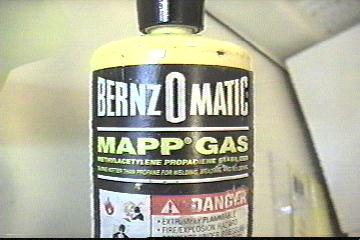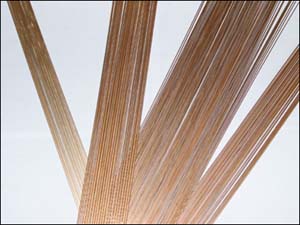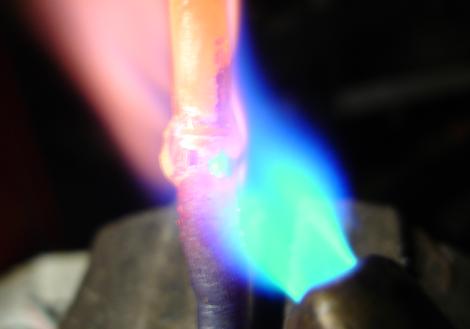
 |
|
|
#231 |
|
Lurking Renovator
Join Date: Jan 2010
Posts: 21
Thanks: 0
Thanked 0 Times in 0 Posts
|
I made something similar to that for my wvo jetta so making a heat exchanger with no pressure ground loop water was my first idea, then I realised my water heater is just on the other side of the wall and I needed something very reliable to hold city water pressure(60-70 psi around here) and high pressure refrigerant, your FPHE looks like the hot ticket.
Thanks for all the info, I will do more searching and email some suppliers on ebay when I start parts gathering for the project, can't wait to see the difference on the kill a watt. Anyway back to you, any news on the heatpump? |
|
|

|
|
|
#232 | ||
|
Supreme EcoRenovator
Join Date: Mar 2009
Location: Portland, OR
Posts: 4,004
Thanks: 303
Thanked 724 Times in 534 Posts
|
Joe,
Quote:
However, if you are worried about whether a DIY soft copper heat exchanger would be able to withstand the stresses, keep in mind that both house plumbing and refrigerant lines use this material. Plumbing solder would be strong enough for water pressures, but not for refrigerant use. Silver/phosphor brazing will be suitable for refrigerant, and more than strong enough for water pressure. Quote:
gumption bucket But my 'gumption bucket' has filled back up, and now I'm ready to push on... Regards, -AC_Hacker Last edited by AC_Hacker; 01-03-10 at 04:34 PM.. |
||
|
|

|
|
|
#233 |
|
Supreme EcoRenovator
Join Date: Oct 2008
Location: Austin, TX
Posts: 1,154
Thanks: 14
Thanked 257 Times in 241 Posts
|
It's also possible to use copper tubing in PEX tubing or coils of copper tubing in a piece of PVC pipe. In the case of the PVC pipe, design it to swirl the water for better heat transfer and make at least one end screw on so it can be opened for cleaning.
To coil tubing, simply wrap it around a rigid cylindrical object such as a piece of pipe. There are also tools designed just for bending tubing.
__________________
To my surprise, shortly after Naomi Wu gave me a bit of fame for making good use of solar power, Allie Moore got really jealous of her... |
|
|

|
|
|
#234 | |
|
Lurking Renovator
Join Date: Jan 2010
Posts: 21
Thanks: 0
Thanked 0 Times in 0 Posts
|
Quote:
|
|
|
|

|
|
|
#235 | |
|
Supreme EcoRenovator
Join Date: Mar 2009
Location: Portland, OR
Posts: 4,004
Thanks: 303
Thanked 724 Times in 534 Posts
|
Quote:
I must say that having:  The right tool - MAPP gas & torch, or better  The right material - 5 to 15% silver/phosphorous rod  The right technique - copper glowing cherry red ...makes all the difference. Good luck, and please take lots of pics to share with us.. Regards, -AC_Hacker %%%%%%% Last edited by AC_Hacker; 01-04-10 at 01:03 PM.. |
|
|
|

|
|
|
#236 | |
|
Supreme EcoRenovator
Join Date: Mar 2009
Location: Portland, OR
Posts: 4,004
Thanks: 303
Thanked 724 Times in 534 Posts
|
Quote:
Do you have any photos of how you did this? -AC_Hacker |
|
|
|

|
|
|
#237 |
|
Lurking Renovator
Join Date: Jan 2010
Posts: 21
Thanks: 0
Thanked 0 Times in 0 Posts
|
so out of your whole project it seems the brazing is the most difficult part to get right, has anyone tried this stuff?Home I take it from a couple threads I read online that it works when used correctly.
|
|
|

|
|
|
#238 |
|
Supreme EcoRenovator
Join Date: Oct 2008
Location: Austin, TX
Posts: 1,154
Thanks: 14
Thanked 257 Times in 241 Posts
|
I have not built that type of heat exchanger. I did build an open coil heat exchanger for my air compressor (so I can inflate tires with cool air) which is just about 5' of 1/4' tubing coiled to about 3" diameter, using a glass jar as a form to coil it around.
For your use, it would be similar except you'll probably want to use a longer length of 3/8" copper tubing and a tighter coil so it fits inside a piece of 4" PVC or CPVC pipe. Drill two holes near the ends of the pipe to allow the tubing to connect outside, then drill and tap two more holes for water. (If you're using it as a condenser, you'll want the water inlet near the bottom and the outlet near the top.) Then affix something to the inlet to force the water to cyclone inside, such as an inch or two of copper tubing bent to force the water to exit at an angle. Close off the bottom with an end cap and the top with a screw thread fitting and plug so it can be taken apart for cleaning and modification. (Or use screw thread fittings on both ends for maximum flexibility.)
__________________
To my surprise, shortly after Naomi Wu gave me a bit of fame for making good use of solar power, Allie Moore got really jealous of her... |
|
|

|
|
|
#239 | |
|
Supreme EcoRenovator
Join Date: Oct 2008
Location: Austin, TX
Posts: 1,154
Thanks: 14
Thanked 257 Times in 241 Posts
|
Quote:
__________________
To my surprise, shortly after Naomi Wu gave me a bit of fame for making good use of solar power, Allie Moore got really jealous of her... |
|
|
|

|
|
|
#240 | |
|
Supreme EcoRenovator
Join Date: Mar 2009
Location: Portland, OR
Posts: 4,004
Thanks: 303
Thanked 724 Times in 534 Posts
|
Quote:
But, regarding workmanship and what kind of materials to use for creating your own innovations, consider this, 1. Stress: A refrigeration device is a machine, and is subject to both mechanical cycling and to temperature cycling. If you expect to succeed you will want to use approaches that can withstand both vibration and large temperature changes. 2. Automation: Our expectations of a refrigeration device are that they will operate without our attention. 3. Reliability: We expect our refrigeration devices to give us trouble free service for a long time. I think that the current expectation for a new refrigerator is 10 years, or better (my refrigerator is about 80 years old, still running perfectly, but that's another story). Can you imagine how your relationship with a refrigerator, or air-conditioner might be different, if you were required to stand near it , and watch it, to make sure it could make it through another run cycle? I doubt that many of us would even have a refrigerator if it meant getting out of bed at 3 am to monitor its performance. So, regarding the use of glue, according to the advertisement, that product will reach a strength of about 1,200 psi. Silver brazing rod has a strength of between 60,000 psi and 80,000 psi. That' over 50 times stronger. Your choice... Regards, -AC_Hacker Last edited by AC_Hacker; 01-04-10 at 02:04 PM.. Reason: blog would not let me add pic unless I saved then went to edit mode |
|
|
|

|
 |
| Tags |
| air conditioner, diy, gshp, heat pump, homemade |
|
|